- News & information
- About
- History
- George V. Voinovich
- George V. Voinovich Collection
- Calendar
- How to Find Us
- News
- Archives
- Photojournalism Fellowship Project
- Photo Essays
- Current Fellow
- Previous Fellows
- Reports and Publications
- Archives
- Students
- Prospective
- Center for Entrepreneurship
- Environmental Studies
- HTC/Voinovich School Scholars
- Master of Public Administration
- Current
- HTC/Voinovich School Scholars
- Center for Entrepreneurship
- Environmental Studies
- Master of Public Administration
- Alumni
- Contact
- School Leadership
- Strategic Partners Alliance
- Ohio University Public Affairs Advisory Committee
- Ohio University Public Affairs Advisory Committee
- Faculty and Fellows
- Faculty
- Visiting Professors
- Voinovich Fellows
- Professional Staff
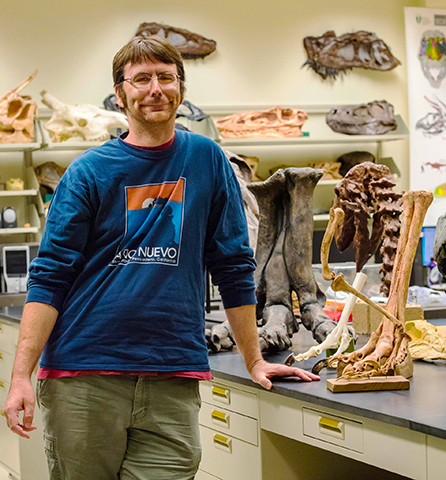
Ryan Ridgely
- Scientific Illustrator
- 3D X-ray Imaging Specialist
Email: ridgely@ohio.edu
Click on thumbnails in the mini-portfolio below to see some featured projects from my long and varied career. Behind each image below, you'll find a video, animation, image, or story. I've worn, and continue to wear a lot of hats, and this portfolio shows my broad professional interests
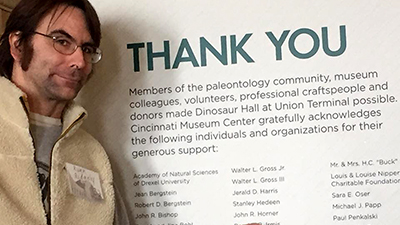
"Watch this Space!""
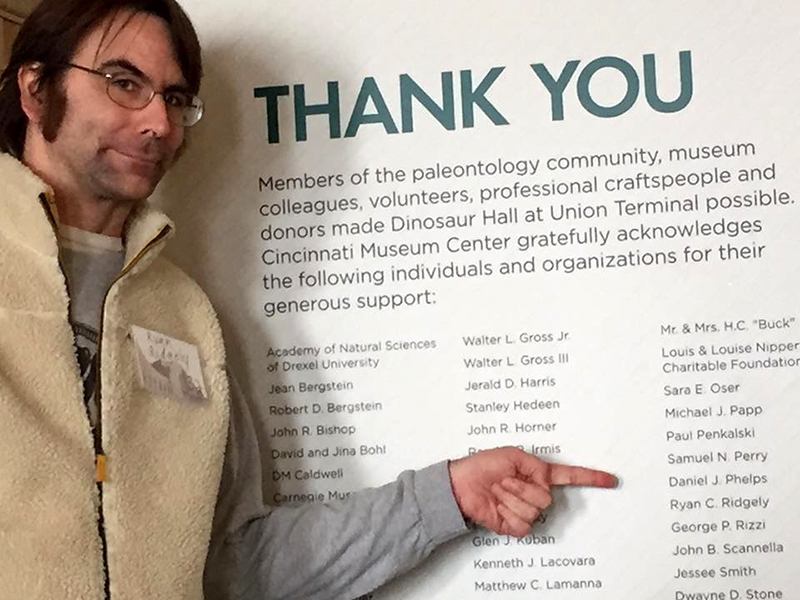
On November 11th, 2018, We got a sneak peak of the Dinosaur Hall in the Cincinati Museum Center at Union Terminal. It's phenomenal! The Exhibit opens later in November, 2018. We helped assemble a hands-on, interactive digital dinosaur exhibit to support the model of "open-inquiry" that the museum is using for the exhibits. Unfortunately, "mum's the word" until the exhibit officially opens!

Memphis Belle Infographic
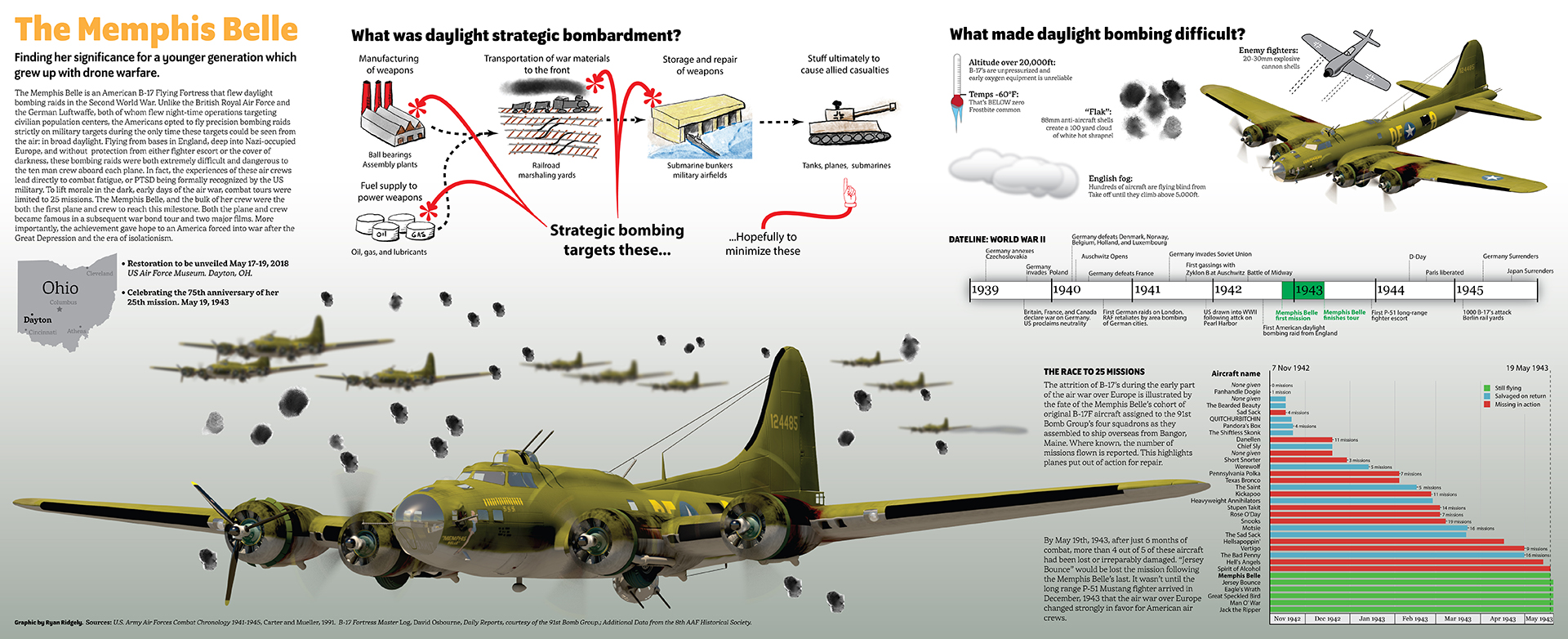
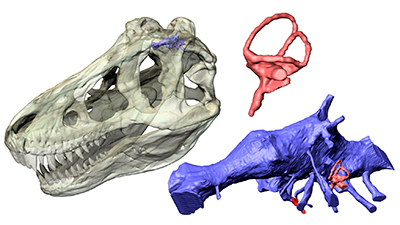
3D Printable Tyrannosaurus rex Brain!
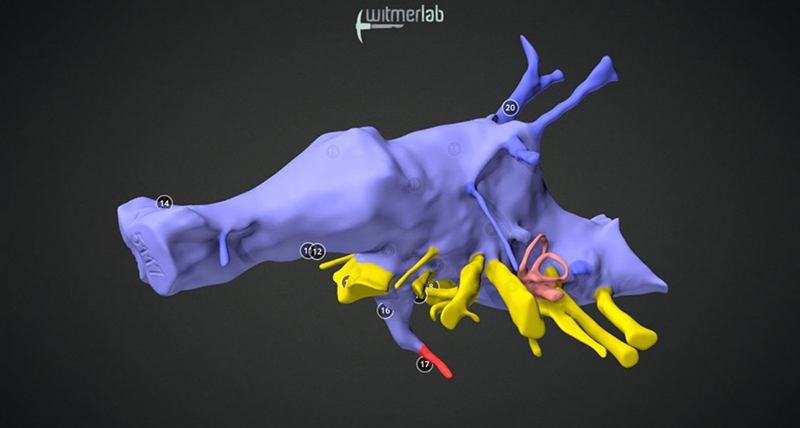
As part of scientific outreach.... and just plain fun!.... we uploaded a 3D interactive, and annotated, model of the brain cavity, cranial nerves, vasculature, and balance/hearing organs of the big boy, Tyrannosaurus rex . Best part? You can download the 3D model for free, and print it out on any 3D printer. How cool is that? This specimen is from the American Museum of Narural History (AMNH 5117), which we had on loan almost a decade ago.
Additionally, you can learn more than you ever wanted to know about Tyrannosaurid neuroanatomy and paratympanic sinuses in the braincase from the technical paper we published nearly 10 years ago. Here's the citable, download via
the button below:
Witmer, L. M. and R. C. Ridgely. 2009. New insights into the brain, braincase, and ear region of tyrannosaurs, with implications for sensory organization and behavior. Anatomical Record 292:1266–1296.

Allosaurus Feeding Mechanics
This is an earlier example of one of my educational outreach projects. The goal was to take hardcore biomechanical simulation data in a technical publication on how the carnivorous dinosaur Allosaurus might have fed, and snazz it up for dissemination to a wider audience. The model was built, rigged, and animated in Maya based on CT data. The CT based skull models were tweaked slightly to match known restorations in the primary literature, and the movements were coordinated to the biomechanical simulation output via rotoscoping in Maya.
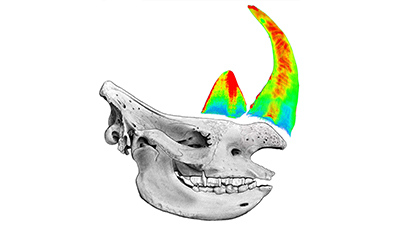
Anatomical Impact of Horn Poaching in Rhinos
This was the most heartbreaking activity I've ever been involved with. The WitmerLab was contacted by the Kariega Game Reserve because of a paper that came out of the lab on how rhinoceros horns are attached to the rhinoceros. The Kariega had several rhinos that had been brutally injured or killed by poachers. You always want your research to be useful, but you never want it to have to be used like this. We did what we could to help the gigantic efforts by the veterinary staff at the game reserve. The video above is an awareness video that we put together. I wish we had the power to stop this horror.
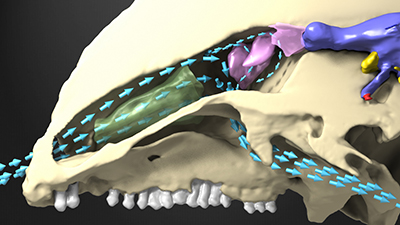
Breathing Life into Dinosaurs
This is another example of making raw computer simulations ready for public consumption. The narrative from the technical paper, and validated using computer flow dynamics, is that the nose and airway of the dome-headed dinosaur Stegoceras simply doesn't work as a nose should without the hypothesized soft-tissue structures that all "warm-blooded animals" living today have.
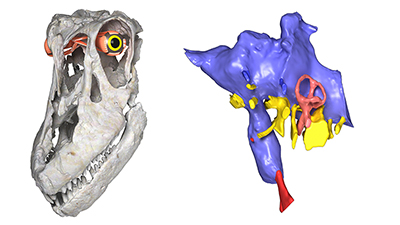
Long-necked Dinosaur, Sarmientosaurus
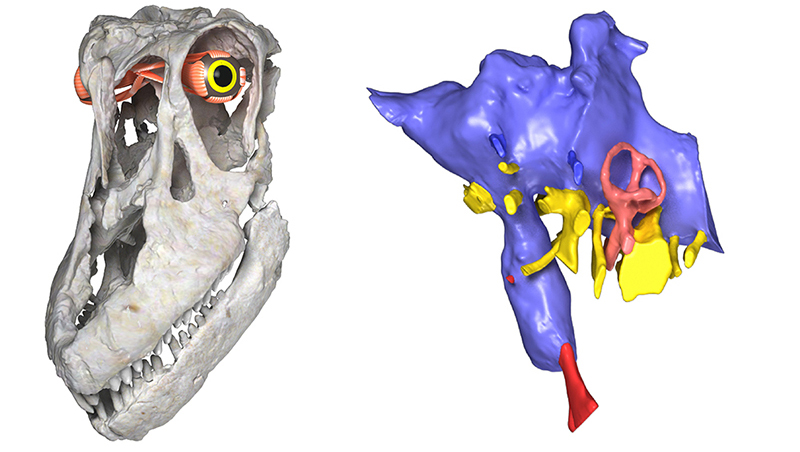
I was very fortunate to work with some heavy hitters in vertebrate paleontology on the analysis and description of the long-necked sauropod dinosaur Sarmientosaurus . Skills I bring to a project like this include the generation of 3D models of the internal anatomy. Here, we see the brain endocast, balance and hearing organs, cranial nerves, and arteries and veins. Eyes and ocular muscles were added to the skull as a point of reference.
Here's the citable, download the paper via the button below:
Martínez, R. D. F., M. C. Lamanna, F. E. Novas, R. C. Ridgely, G. A. Casal, J. Martínez, J. R. Vita, and L. M. Witmer. 2016. A basal lithostrotian titanosaur (Dinosauria: Sauropoda) with a complete skull: Implications for the
evolution and paleobiology of Titanosauria. PLoS ONE 11(4): e0151661. doi:10.1371/journal.pone.0151661.
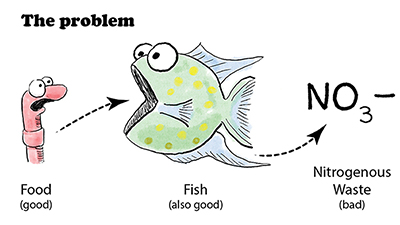
Nitrogen Cycle in the Home Aquarium

This is a snippet of a larger project on aquarium maintenance. There's not that much chemistry to worry about in freshwater aquaria, so why scare people away with the little bit of chemistry that's worth knowing? A little cartooning keeps it fun, while driving home the need for water changes to flush out the nitrates.
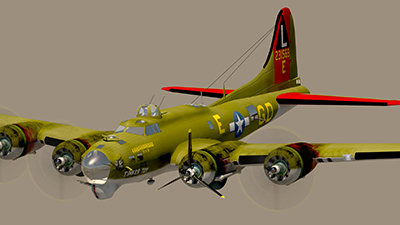
B-17G Flying Fortress Model and Rig
I've done a number of projects with B-17's over the years, as I've been fascinated by the men who flew them and their plight over Europe in the Second World War. This is a fully rigged model of a B-17G Flying Fortress. Wartime service manuals and blueprints were used to generate the model. All control surfaces and other moving parts have accurate ranges of movement. The plane itself wears the markings of the 381st Bomb Group. The name Tinker Toy comes from an earlier B-17E, also of the 381st. The name was chosen for this model as it was known as a "jinx ship" by the superstitious aircrews, as recounted in John Comer's excellent memoir Combat Crew . You can see an interactive version of this model on Sketchfab.
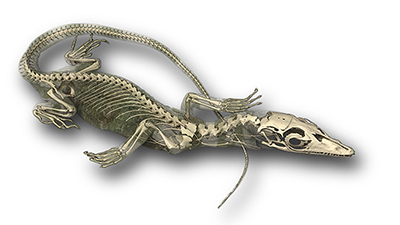
Ancient Lizard Illustration

This was a fun illustration for a commentary on a new fossil lizard. What made this one enjoyable is that it involved CT scanning a modern-day lizard, and then dressing it up to look the part using Maya, ZBrush, and Photoshop.
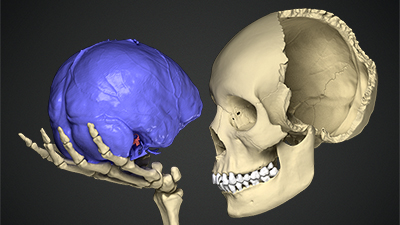
Human Skull with Brain Endocast

I work in Ohio University's Heritage College of Osteopathic Medicine. In this capacity, I’ve generated many learning and teaching aids over the years showing off human anatomy in an interactive format. Unlike many anatomical models that simply are “models”, I use CT scanning and X-ray contrast-enhancing techniques to produce 100% accurate assets. One of these assests that has proven very popular is a human skull model. The Sketchfab button below will take you to an "exploding" version of this skull which you can interact with.
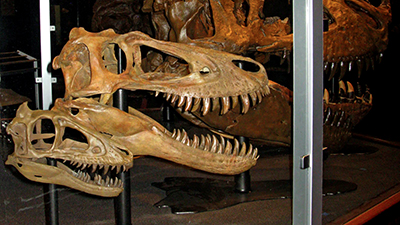
Baby Tyrannosaur Restoration on Exhibit
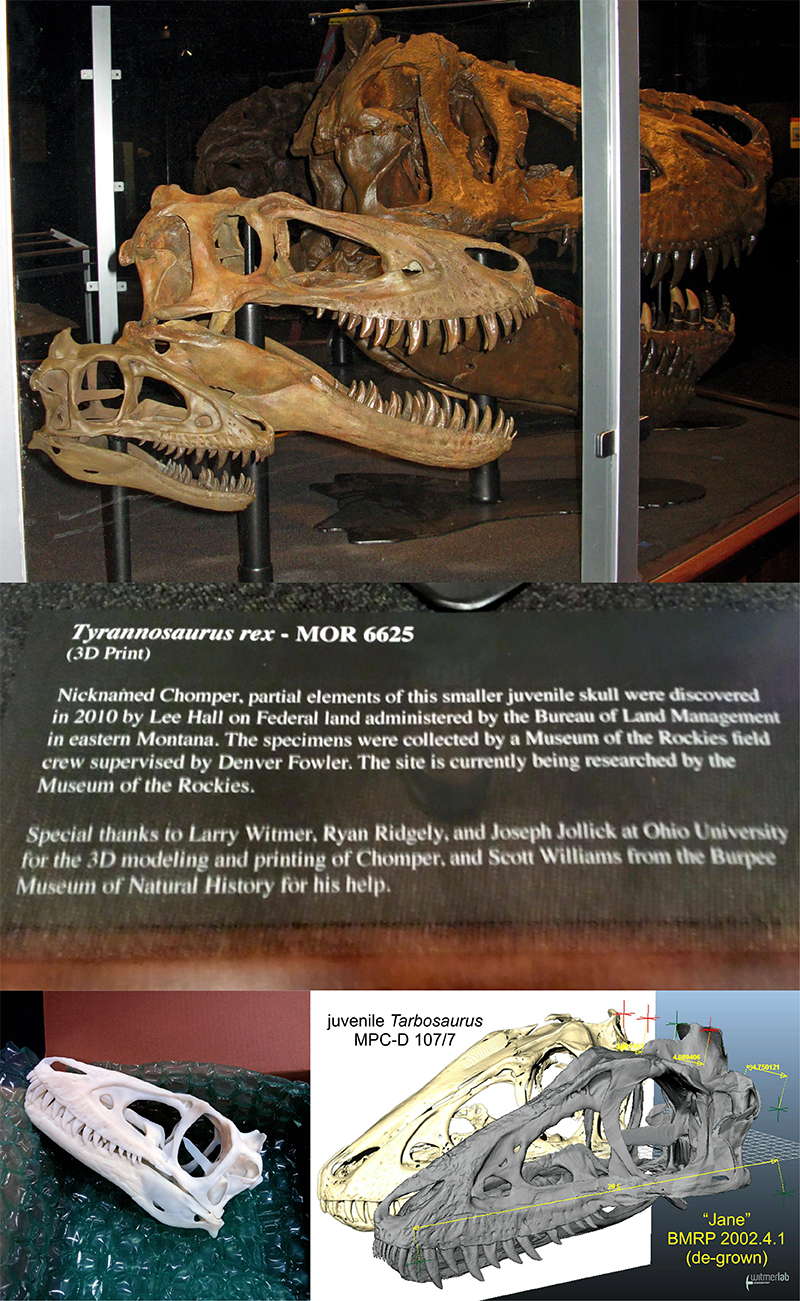
It's a great privilege to work on some of the most famous beasts that ever walked the earth, namely Tyrannosaurs. It’s humbling when museums ask you to help flesh out their exhibits on these beasts. Beasts that started out very small as babies. Could we help the Museum of the Rockies in Bozeman, MT show what a baby Tyrannosaur (nicknamed, "Chomper") might have looked like based on some very scrappy fossil evidence?
We could try!
We took a model of another juvenile tyrannosaur, I tweaked it to match a baby Tarbosaurus that we had recently published on, and then I digitally sculpted the other parts we needed and finally, we digitally inserted the actual fossils. A 3D print of our file was done here at Ohio University's Innovation Center, which was sent off to the Museum of the Rockies where it was painted and put on display in an exhibit on Tyrannosaur growth.
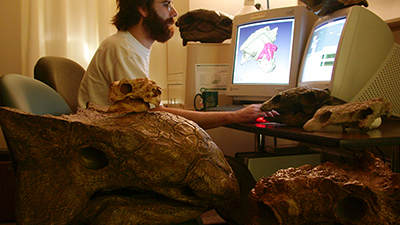
October 7, 2003: Armored Dinosaurs!
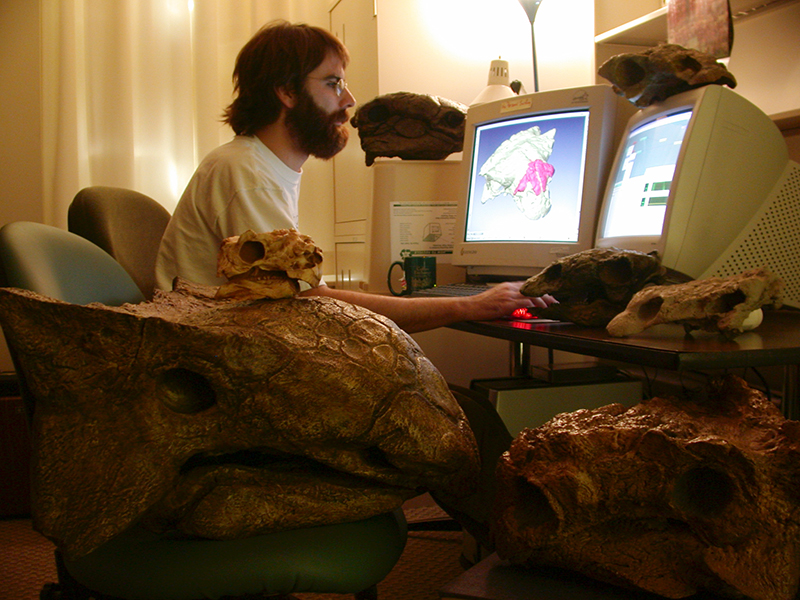
Working many, many moons ago with CT data of the armoured dinosaurs known as Ankylosaurs. The CT reconstructions eventually led to some of our seminal work which showed that these animals had multiple "loops" in the nasal airway, the so-called "crazy-straw" airway. We also figured our how much a T-rex head likely weighed!
Here's the citable. Download via the button below:
Witmer, L. M., and R. C. Ridgely. 2008. The paranasal air sinuses of predatory and armored dinosaurs (Archosauria: Theropoda and Ankylosauria) and their contribution to cephalic architecture. Anatomical Record 291:1362–1388.
Contact Information:
(740) 593–9381 | Building 21, The Ridges
Ohio University Contact Information:
Ohio University | Athens OH 45701 | 740.593.1000 ADA Compliance | © 2018 Ohio University . All rights reserved.
